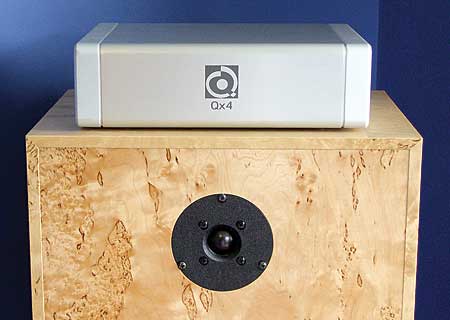This is a review and detailed measurements of the Cybershaft Platinum (Palladium) OP16 clock with its optional Ultra Pure Power Supply. It is on kind loan from a member. The clock costs US $1,457 and power supply, US $347.
View attachment 181901
While "DIY" in nature, I still like the look of these cases. Replacement spikes are provided for the feet as well as necessary cabling:
View attachment 181903
Normally audio DACs extract the DAC clock from incoming S/PDIF or Toslink inputs. But for asynchronous USB, use their own internal clock. In professional setups with many devices over large distance, a "master clock" is used to synchronize various ADC and DAC devices. At home we don't have such a use but somehow the application has morphed into "better clock" than what is inside your DAC. Some DAC companies provide their own external clocks. Here, we have an independent Japanese company providing it with various grades ("OP16" is one -- it ranges from OP11 to OP19).
I had a hard time finding reviews of this product but did run into this
forum post:
View attachment 181906
I am amazed that his system was not relaxed before arrival of this unit. Wonder how he tolerated it that way....
This device was sent to me by the owner of SMSL VMV D3 so I chose to test it with that DAC.
Cybershaft Clock Measurements
Manufacturers of these clocks like to rave about the accuracy of the clocks in them. But we don't listen to clocks, we listen to analog output of the DAC and that is how I am going to test the effect of these units. Let's first test the VMV D3 with USB input and hence its own internal clock:
View attachment 181904
Now let's switch to using external Cybershaft OP16 clock:
View attachment 181905
I can't find any difference whatsoever other than minor run to run variations. Noise, distortion, etc. all seem the same. So we need a more precise test focusing on clock accuracy which is jitter. Let's again run the D3 with its internal clock:
View attachment 181907
Now let's change to Cybershaft:
View attachment 181908
As I suspected, performance gets worse, not better! We now have new jitter components we did not have before. Zooming into them we can see better:
View attachment 181909
How can this happen? Well, I don't care how good your clock is. When it has to travel over a cable and get extracted inside the DAC, it is liable to be worse than the one inside the DAC sitting close to where it is needed. Remember that I said the notion of a master clock was to get synchronization, not better fidelity and we see this here.
Discussion and Conclusions
It is amazing how our lay intuition leads of astray. We assume these clocks are like watches where more accuracy is better. Turns out we are not at all sensitive to absolute pitch as if we were, no one would be listening to analog sources! I can play my music 1% slower or faster (all the time) and you wouldn't know there is anything is wrong. What we care about is consistency of "speed" or clock. This type of variation causes jitter. So the fact that an external clock is "oven controlled," stable over time, etc. is of no value. What matters is that it doesn't vary over time. As I explained above though, best way to get consistency is with an internal clock right close to the DAC, not one across feet and meters of cabling. At best, such an external clock can match what is inside. At worst, it will make it perform worse as we see in the case of D3.
I run my jitter test in every DAC I review. Should that show clean spectrum, which it does in countless high performance DACs, then you don't need or want another clock. All you are doing is wasting money and possibly getting worse objective performance. Fortunately the levels of jitter created here is well below audibility so it doesn't do any harm other than to your pocketbook.
As to people thinking it sounds better, well, that is improper subjective testing for you. They connect the clock, focus into their music and all of a sudden hear detail they had not "heard" before. The combine it with wrong impression of what this device does to fidelity and they convince themselves of the improvement they provide. They need to do a simple AB test by switching the internal DAC and external DAC 10+ times blind and see if they get at least 8 right. Without it, they create folklore which causes people to waste money.
I should note that in the English translation of the Cybershaft webpage I did not find much of any reference to making things sound better so in that regard, I appreciated it but of course, the intent is obvious.
Needless to say, I don't recommend anyone use external clocks with their DACs unless they need synchronization with other devices.
I can't recommend the Cybershaft OP16 clock.
-----------
As always, questions, comments, recommendations, etc. are welcome.
Any
donations are much appreciated using
: https://www.audiosciencereview.com/forum/index.php?threads/how-to-support-audio-science-review.8150/

